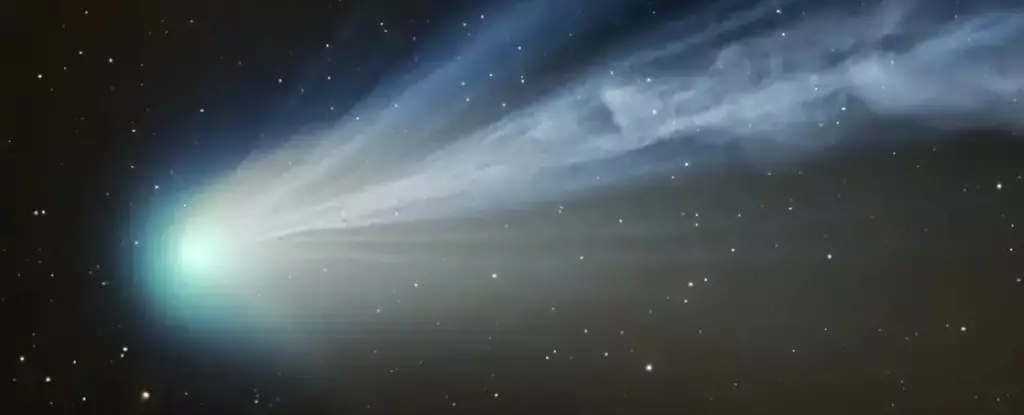On April 8th, a rare celestial event is set to occur, capturing the attention of astronomy enthusiasts across the US. Not only will there be a total solar eclipse, where the moon will cast a shadow over the sun, but also the long-awaited approach of Comet 12P/Pons-Brooks, known as the “Mother of Dragons” or the “Devil comet.” This convergence of two unique events in the sky offers viewers a chance to witness something truly remarkable.
As the solar eclipse darkens the skies on Monday, there is an opportunity to catch a glimpse of the “Devil comet” alongside the celestial phenomenon. To locate Comet 12P/Pons-Brooks, observers should first look towards the eclipsed sun to find the planet Jupiter as a reference point. Then, by shifting your gaze slightly upwards and to the right of Jupiter, you may be able to spot the comet positioned between Jupiter and the sun, albeit closer to Jupiter. The comet is characterized by horn-shaped outbursts in its coma, emitting green light due to high levels of dicarbon it contains.
Despite its estimated size, the visibility of the “Devil comet” can be challenging to predict accurately. While it will come within proximity to the sun on April 8th, its apparent magnitude of about 4.9 might make it barely visible to the naked eye. Comets’ brightness fluctuates based on their distance from the sun and the interaction with sunlight within their coma. As a result, what was expected to be a dazzling display can sometimes be a disappointment. However, the cryovolcanic nature of Comet 12P/Pons-Brooks, causing frequent eruptions and increased brightness, offers a glimmer of hope for an enhanced viewing experience.
Comet watching is not an exact science, and surprises are part of the thrill of observing these celestial bodies. The “Mother of Dragons” has a history of putting on unexpected shows, leaving astronomers and enthusiasts in anticipation. If the “Devil comet” eludes your sight on April 8th, be sure to keep an eye out in the days leading up to April 21st, when it will be closest to the sun and potentially at its brightest. Tracking its path across the sky as it moves closer to Jupiter offers a captivating observation opportunity for those willing to indulge in the marvels of the cosmos.
The rare occurrence of a total solar eclipse alongside the approach of Comet 12P/Pons-Brooks presents a unique and awe-inspiring event for sky gazers. While challenges in visibility and uncertainty surround comet observations, the anticipation of witnessing these celestial phenomena align in the night sky is an experience not to be missed. As astronomers and enthusiasts prepare to witness this celestial dance, the mysteries of the universe unfold before our eyes, reminding us of the vastness and beauty that exist beyond our world.


Leave a Reply